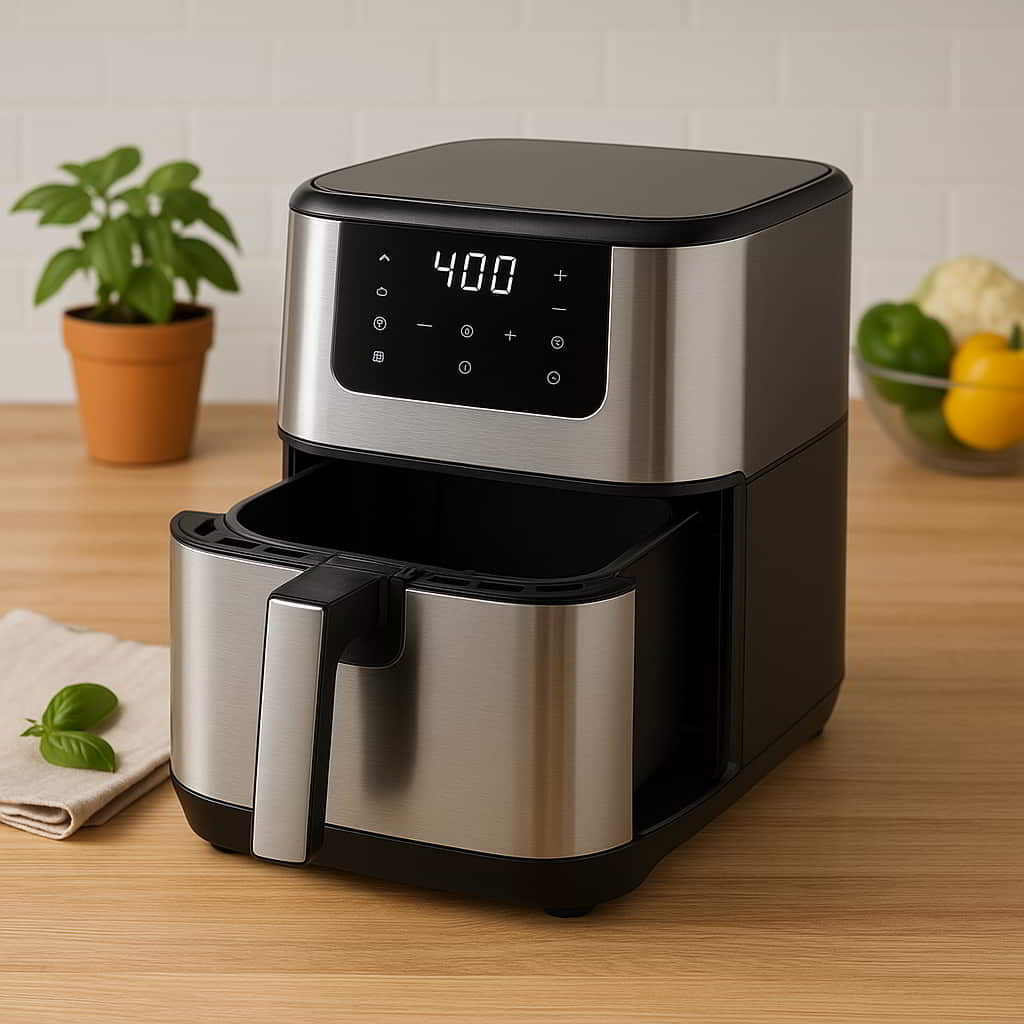Why “Non-Toxic” Matters in Shared Kitchen Spaces
Many modern appliances come with “non-stick” coatings that often include PFAS, PTFE, or other chemicals that may degrade under high heat. Over time, these substances can release particles or fumes into food or air – a serious issue in busy office kitchens where appliances are used daily.
Choosing safer, non-toxic appliances protects both employee health and corporate reputation. Transparent sourcing and material labeling are becoming standard in workplace wellness strategies, especially for companies that link sustainability with employee wellbeing.
What to Look for in Non-Toxic Kitchen Appliances
Before investing in shared kitchen equipment, check for these key indicators:
- Material transparency – food contact parts should be clearly labeled (ceramic, glass, stainless steel).
- PFAS and PTFE-free construction – confirm this claim directly from the manufacturer.
- Durability and scratch resistance – avoid low-cost coatings that degrade quickly.
- Ease of cleaning – removable trays and smooth interiors reduce residue buildup.
- Third-party testing – look for NSF, SGS, or TÜV certifications to verify safety claims.
Safer Air Fryers for Office Use
Air fryers are now a standard in workplace kitchens – but many contain toxic coatings. The models below emphasize safer materials such as ceramic or glass while maintaining strong performance.
| Model | Key Feature | Approx. Price | Rating | Suitable For |
|---|---|---|---|---|
| Ninja CRISPi FN101EUS | Glass chamber, ceramic tray | 200 USD | ★ 4.5 | Compact teams |
| Ninja AF300EU | Ceramic basket, multi-function | 180 USD | ★ 4.8 | Medium offices |
| Philips HD9867/90 | Large capacity, non-toxic coating | 110 USD | ★ 4.8 | Heavy daily use |
| GreenPan Air Fryer | Fully PFAS-free, ceramic surface | 130 USD | ★ 4.4 | Eco-focused offices |
| Wartmann Ceramic Air Fryer | Minimalist, easy to clean | 200 USD | ★ 4.8 | Shared kitchens |
| Cecotec Cecofry FireDome 8000 Pro | Dome design, PFAS-free interior | 80 USD | ★ 5.0 | Occasional users |
| Lehmann LHODF-1880B | Budget stainless option | 65 USD | ★ 4.8 | Small offices |
| nutribullet Twin Drawer Air Fryer | Dual ceramic baskets | 90 USD | ★ 4.8 | Parallel meal prep |
Using and Maintaining Non-Toxic Appliances
Even the safest materials require proper handling to stay non-toxic over time.
- Avoid overheating – most non-toxic coatings perform best below 230 °C.
- Use gentle utensils – wood or silicone tools prevent scratches.
- Clean carefully – avoid harsh abrasives or dishwasher cycles that damage coatings.
- Check ventilation – keep the kitchen well-aired to prevent fumes from food oils or grease buildup.
- Replace worn parts – chipped trays or peeling baskets should be replaced immediately.
Applying the Same Standard to Other Appliances
The same safety logic applies beyond air fryers:
- Toasters – pick models with stainless or ceramic interiors instead of coated aluminum.
- Coffee machines – avoid plastic parts that touch hot water; glass or stainless steel are safer.
- Kettles – ensure the heating element is not exposed to plastic.
- Microwaves – choose units with glass turntables and BPA-free handles or covers.
Comparing Key Safety Features
| Feature | Why It Matters | How to Verify |
|---|---|---|
| PFAS-free materials | Reduces exposure to “forever chemicals” | Manufacturer specifications |
| Ceramic or glass interiors | Chemically stable and non-reactive | Product labeling |
| Removable trays and baskets | Easier cleaning and inspection | Design specifications |
| Replaceable components | Extends lifespan, reduces waste | Warranty and parts availability |
| Independent certification | Confirms material safety | NSF, TÜV, or SGS documentation |
With the growing focus on workplace wellness and sustainability, non-toxic appliances have become a defining standard for responsible office design. They protect employees, support environmental goals, and signal that the company invests in long-term health and quality – not just convenience.
